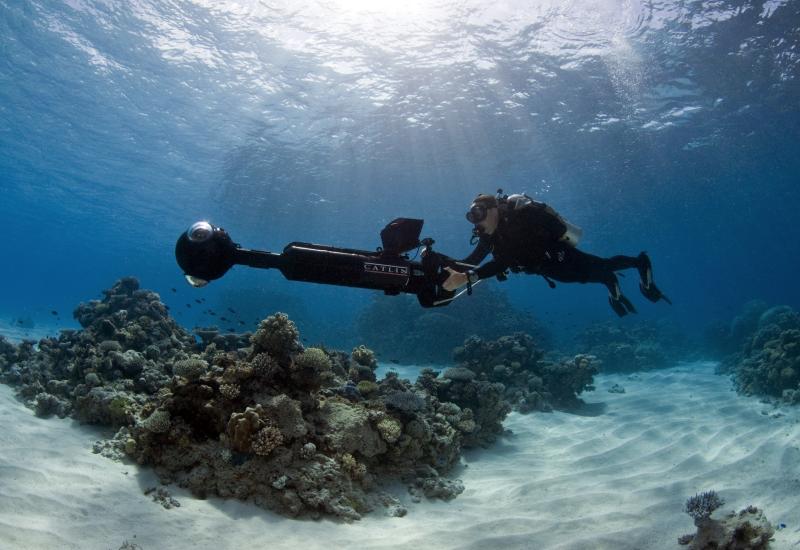The Colorful Life of Sea Creatures
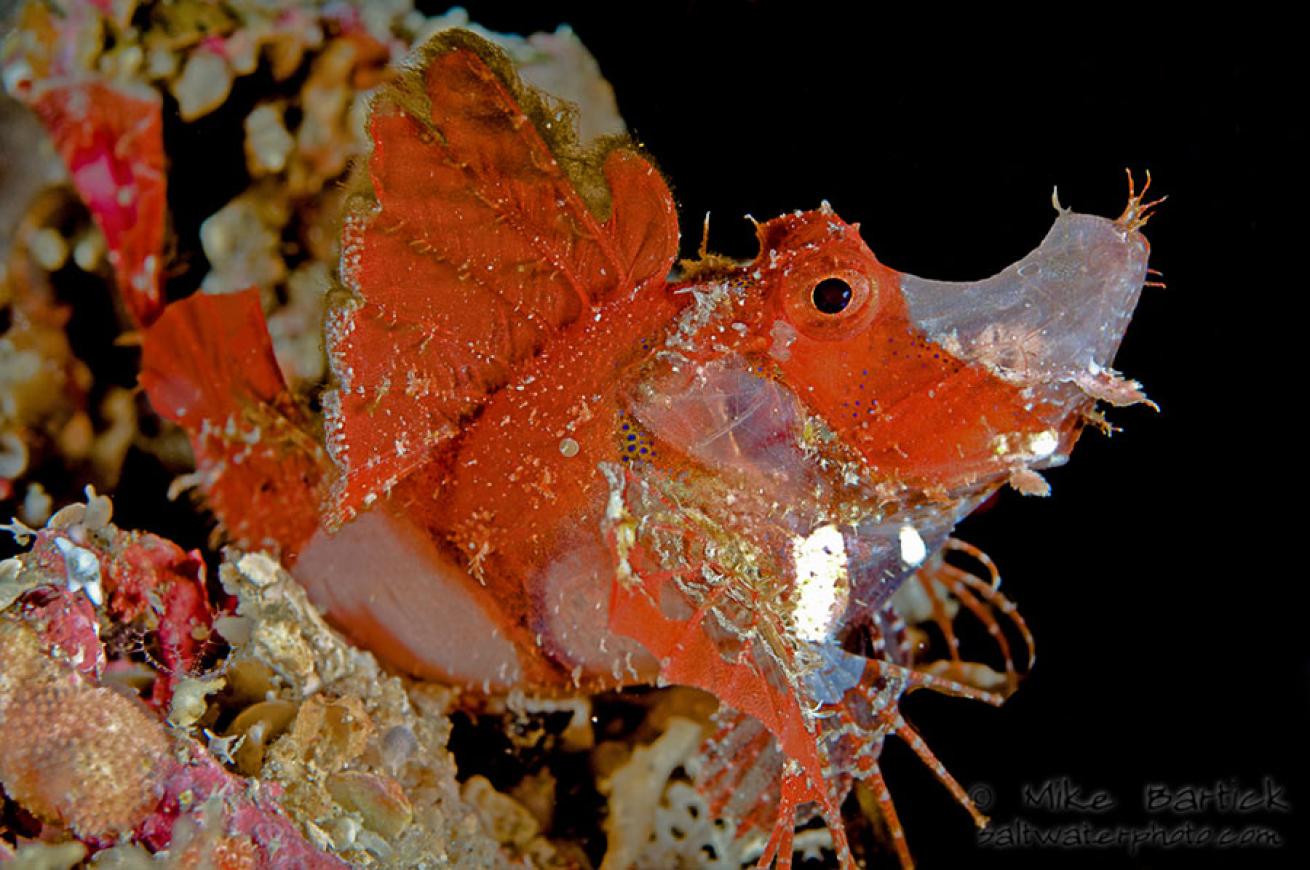
Mike BartickJuvenile phased Rhinopias eschmeyeri behave in much of the same manner as the adults but differ in colorations. The saddled colors of the eschmeyeri give way to a solid coloration with interesting appendages making them a Holy Grail find.
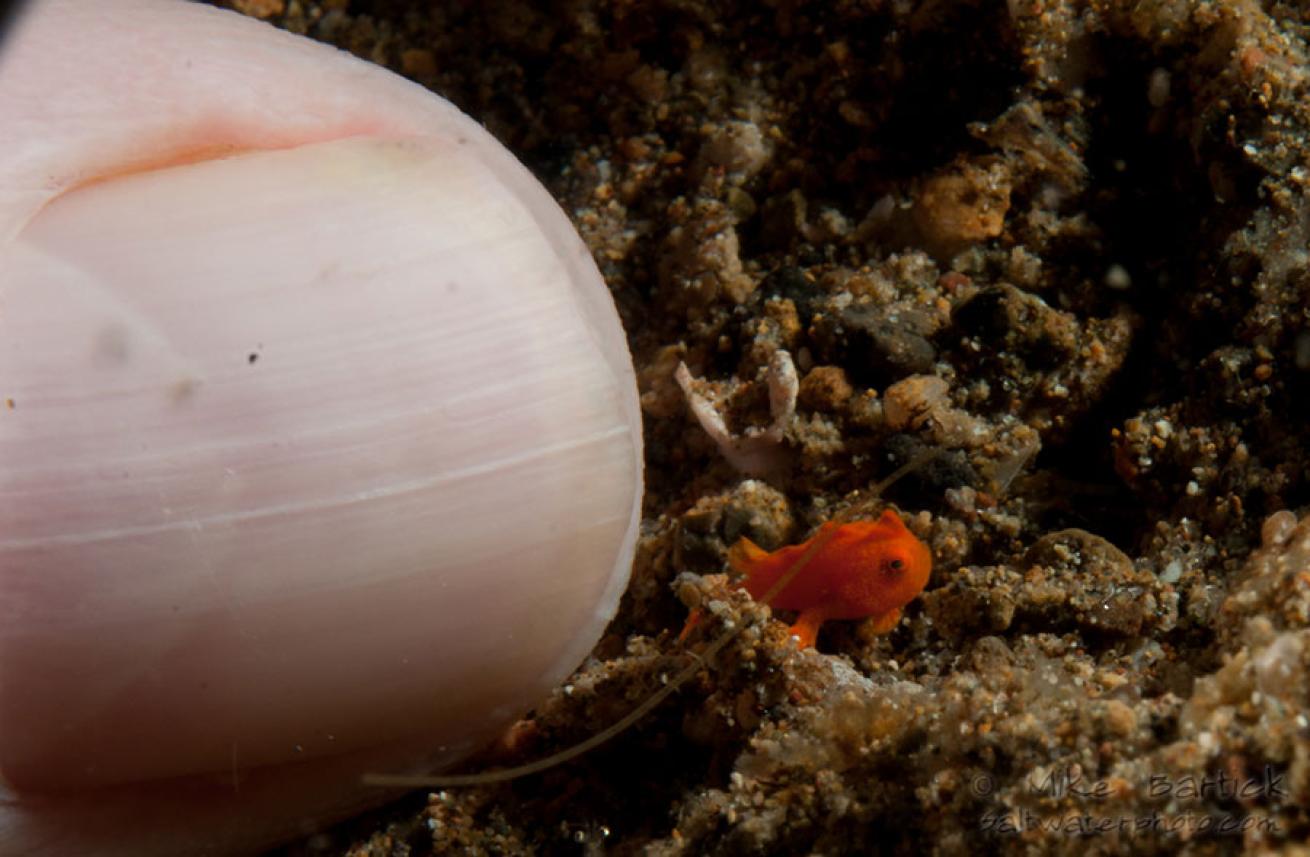
Mike BartickA juvenile frogfish is very small when compared to my thumb. At this new juvenile stage it is impossible to determine what kind of frogfish it will turn out to be. Fully equipped with its lure, the juveniles are very active, constantly hunting and fun to watch.

Mike BartickMany Spotted Sweetlips are often called Harlequin Sweetlips (Plechtorhinchus chaetodonoides) and have brilliant coloration with spots and a pattern speculated to mimic a poisonous flatworm, but while their colors are eye popping, it’s their erratic movements that catch a diver’s eye.
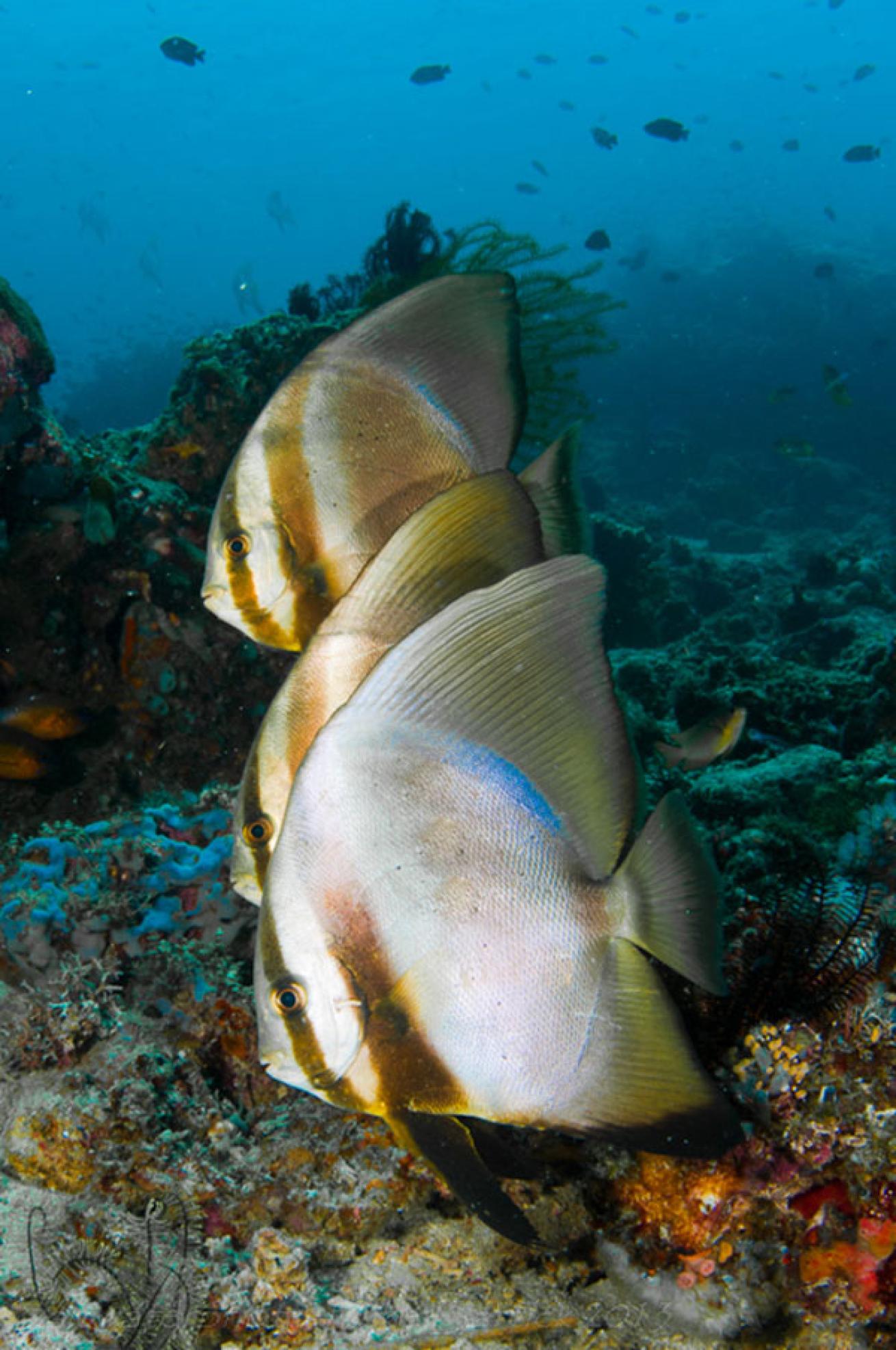
Mike BartickAdult spadefish look and behave nothing like the juveniles. The midnight black colors fade to silver and all that remains as black are the two bars across the face and gill slits. They now congregate together and can be found on structures, coral heads and under protective overhangs.
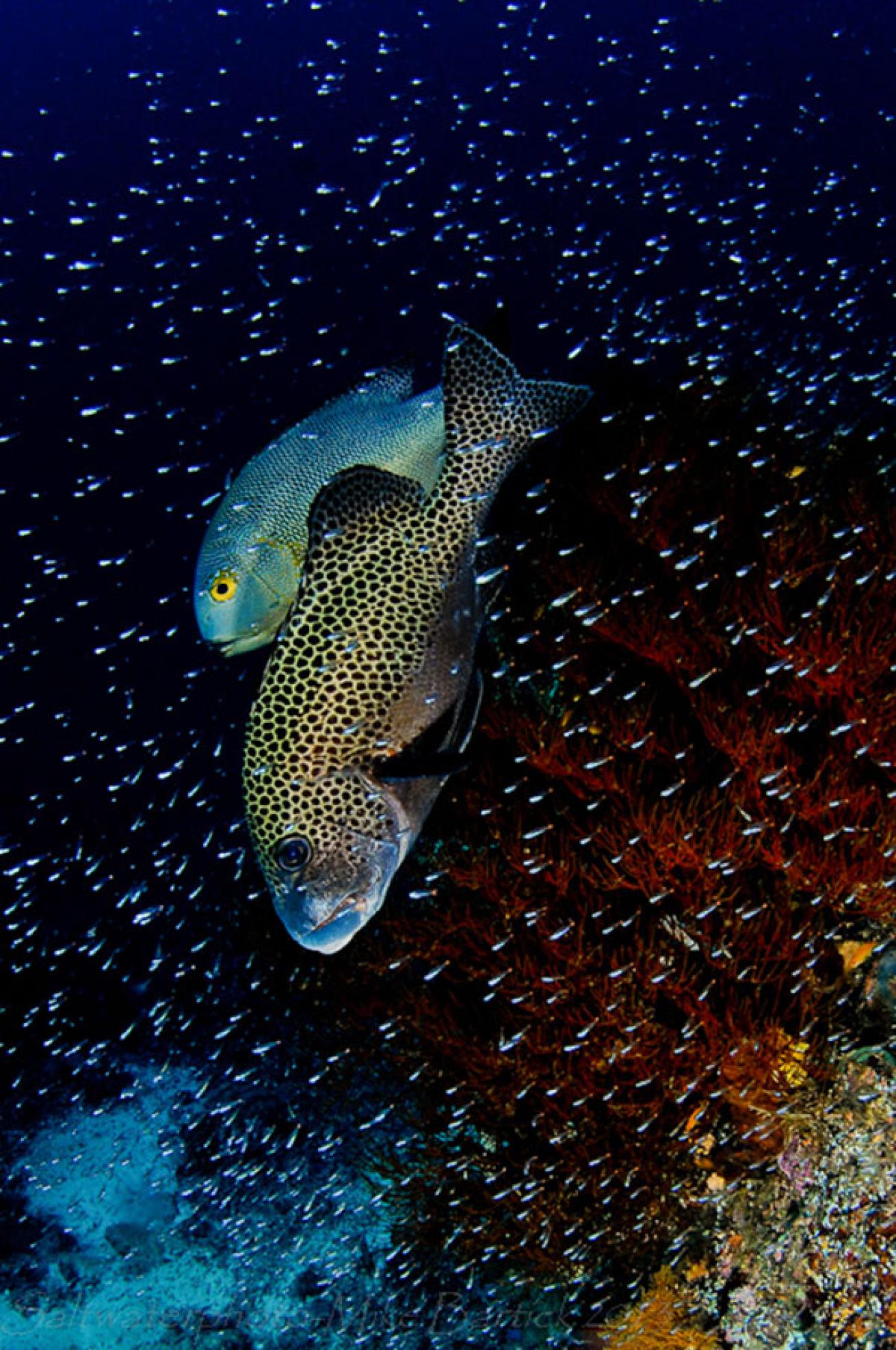
Mike BartickThe adult Terminal Phase sweetlips in this photo has now reached the peak of both size and color. The adult looks and behaves completely different than that of the juvenile in the previous photo. Congregating together under coral heads or on wrecks, sweetlips make for really beautiful photographs, and as you make a slow approach they will allow you to get a few photos before spooking.

Mike BartickIt’s a real treat to find a juvenile spadefish (Platax pinnatus) on any dive site_._ The midnight black and contrasting orange is as unforgettable as attempting to photograph one. Their movements are reminiscent of an over-caffeinated butterfly fluttering in the wind, and when you try to get close enough for a decent photo it usually drives them into hiding. The small juveniles have a smaller body with slightly elongated pinnate fins.
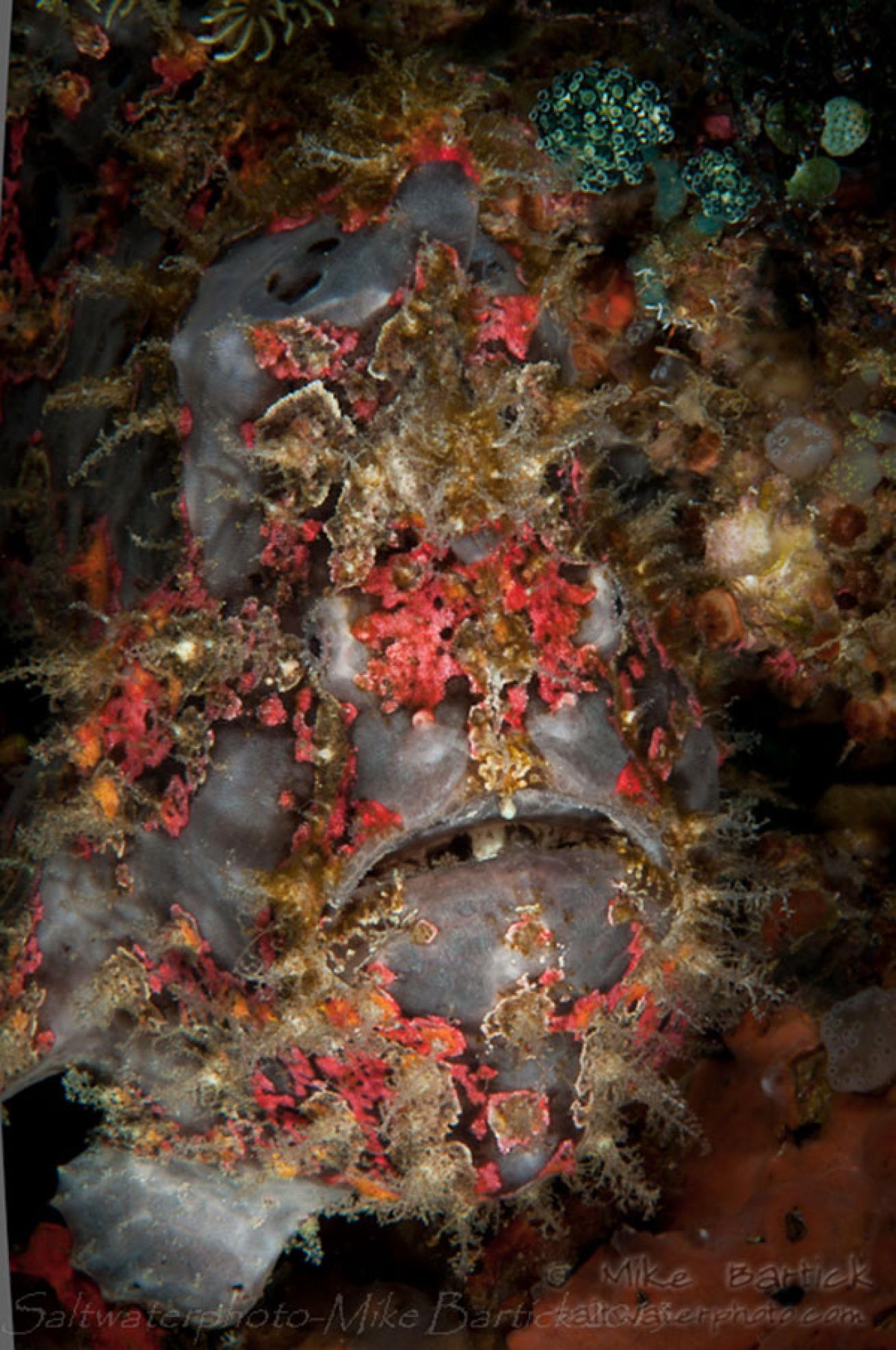
Mike BartickSP variety of a Commerson’s__ frogfish_ (A. commersoni)_. These large and colorful Commerson’s frogfish are stunning. They will inhabit the same location for an extended period of time and are patient with curious divers. Touching frogfish is not a good idea as their skin tissue secrets a protective layer of mucous that helps to keep them healthy, parasite free and alive. Once touched, either on purpose or by accident the frogfish can face imminent peril.
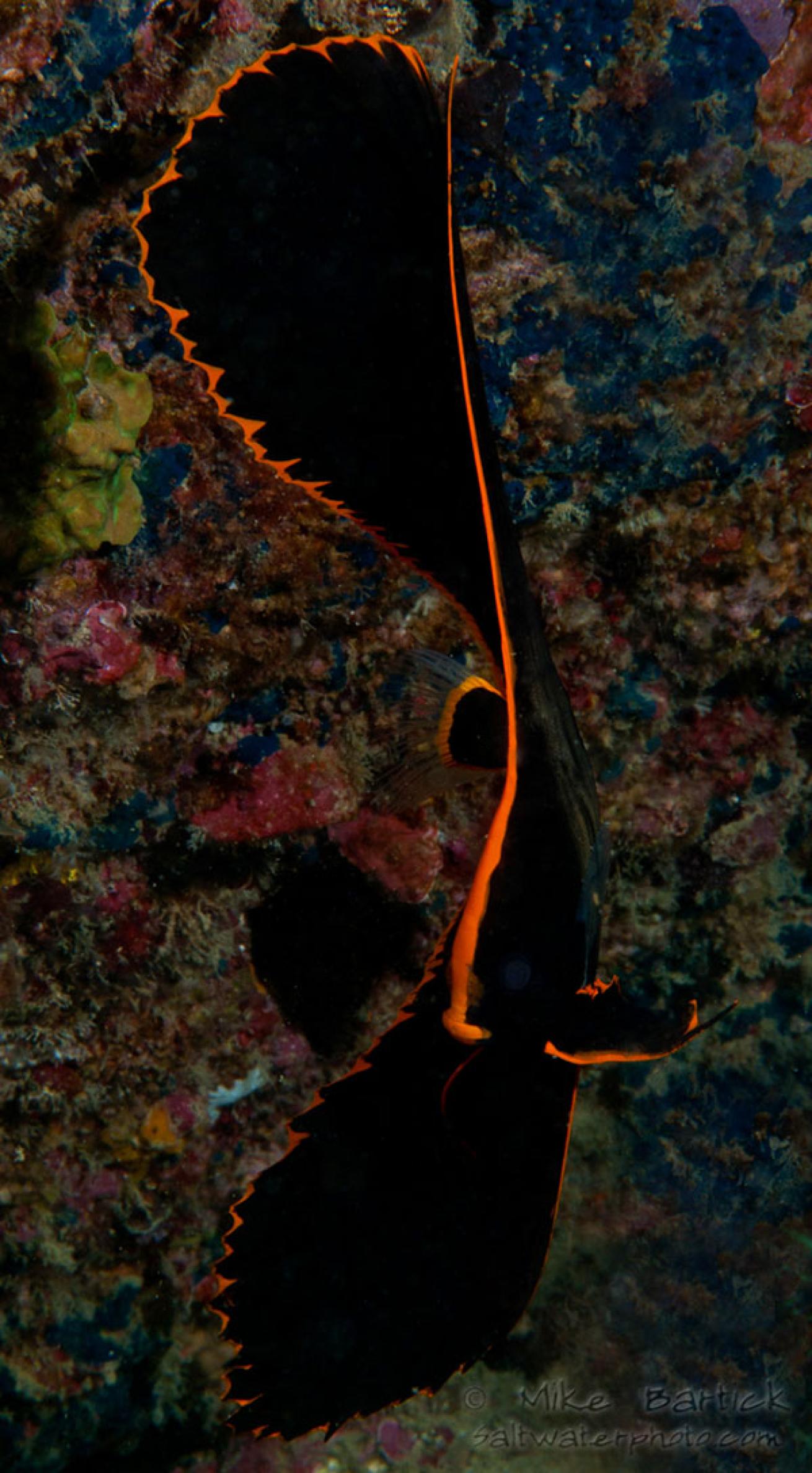
Mike BartickTransitioning JP spadefish (Platax pinnatus) have a larger body and the pinnate fins become extremely elongated. Whitish bars begin to appear on their sides near the gill slits as they transition into the next phase.
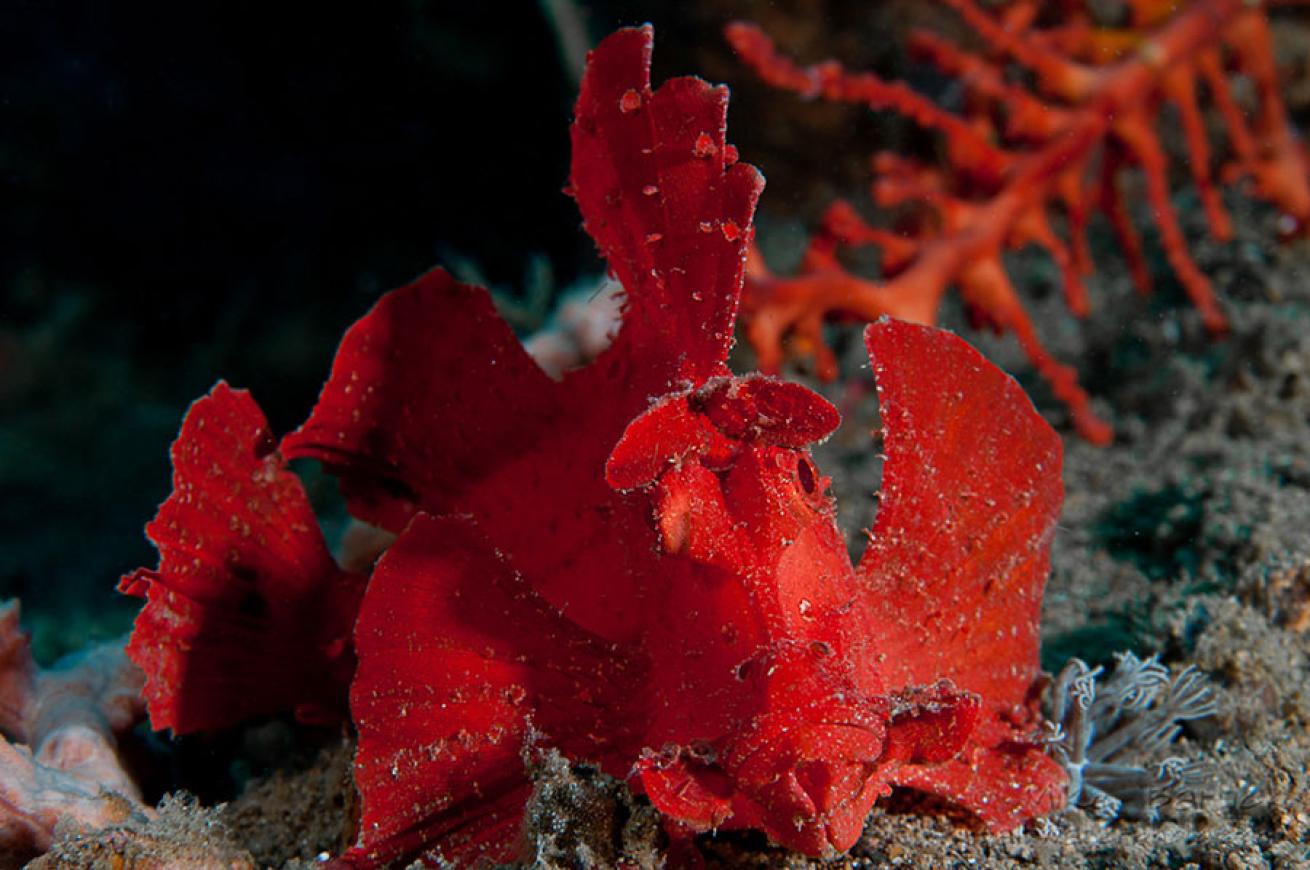
Mike BartickThis SP version of the Rhinopias eschmeyeri is nearly a single solid color. The Rhinopias is indeed a Holy Grail find for photographers and is sought after worldwide. Noted for its unusual colors, patterns and odd behavior, the Rhinopia remains a challenge to locate even when pointed at.
The Indo-Pacific covers a vast amount of space from East to West and is home to more than 2,000 varieties of described reef fish. Experts express different opinions but contend that the actual fish count is much closer to 4,000 total varieties with many not yet correctly identified or described. Part of the difficulty in estimating a number stems from the inability to properly identify each fish species, as their appearance can vary greatly within their lifetime. In fact, juvenile fish can look and behave much differently than their fully-grown selves, fooling even the best of the fish experts and amateurs alike.
Most fish undergo several transitions in a lifetime but are categorized into three main phases commonly referred to as the Juvenile Phase (JP), Sex Phase (SP) and Terminal Phase (TP).
Juvenile Phase (JP) During this phase, the fish’s appearance can be dramatically different from how it will appear and behave as an adult. These JP fish can be remarkably beautiful in color but cannot reproduce and are generally found alone, fluttering about in crevices or amongst rocks. Scientists speculate that the gaudy color patterns and erratic swimming habits of many JP fish mimics that of toxic flatworms and thwarts predation, which presumably allows them to mature into the next phase of development. From there, they develop and transition into the Sex Phase.
Sex Phase (SP) Here is where colors and shape begin to change. Once this metamorphosis has occurred the fish’s colors are set and will remain the same for the majority of its life span. The SP fish can now produce healthy offspring and make this their life’s priority, reproducing as much as possible until they transition into the next and final phase of development.
Terminal Phase (TP) The fish are vibrantly colored during this phase, making it easier for them to be properly identified. TP fish will remain these colors until they ultimately perish, and while the TP fish still remain cautious to being approached, their behavior is less erratic.
With all of the constant changes occurring down below, it’s no wonder that the data is so inconclusive. Trying to identify the mass of marine life in our planet’s oceans has proved to be quite a challenge since we humans have embarked on this path. It’s always helpful to study the basics of fish identification but knowing the different phases will help to interpret what you see. Before your next trip to the Indo-Pacific, be sure to pick up a reef fish ID book and bone-up on your bone fish.




